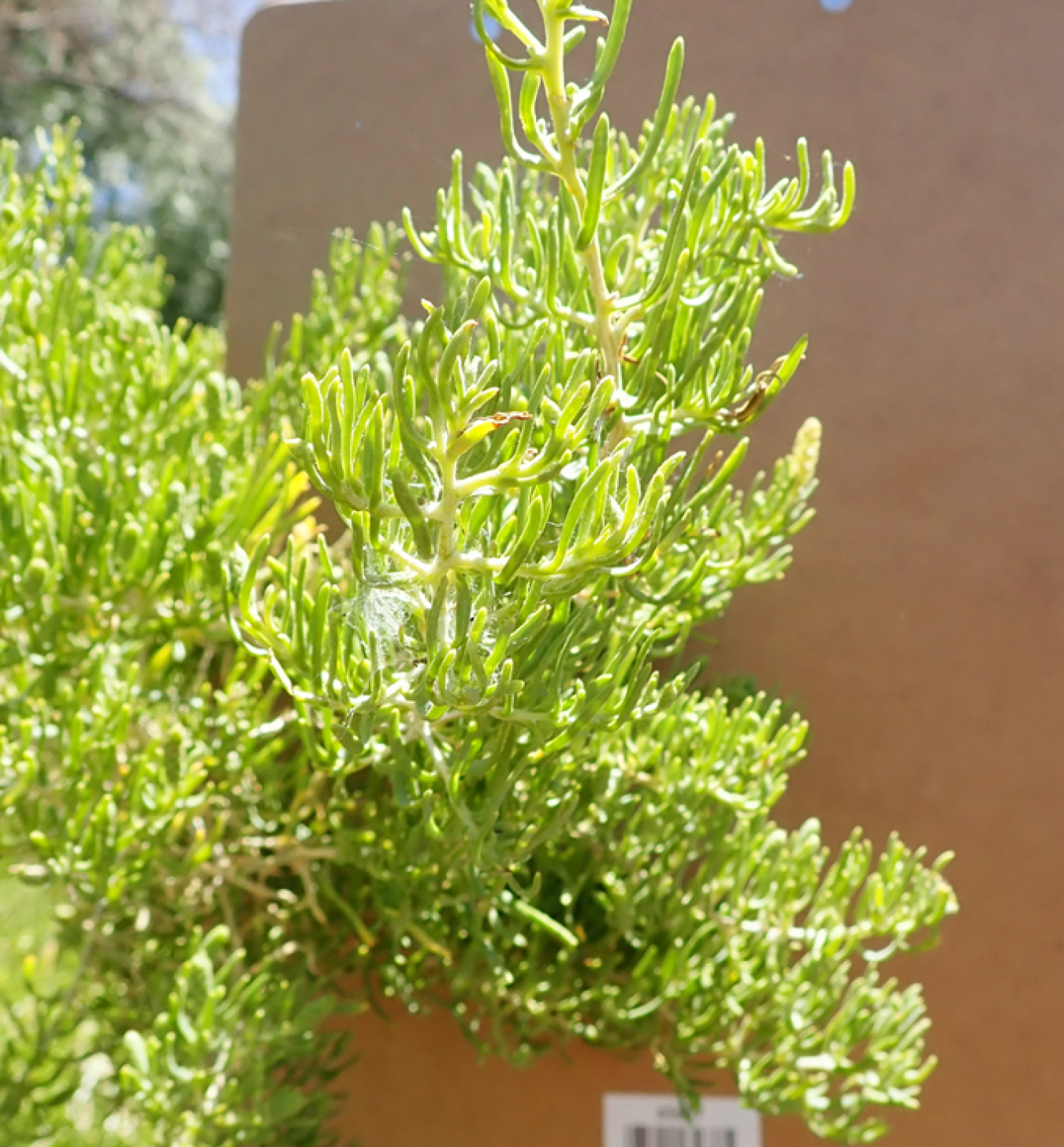
Greasewood is a shrub similar in size to fourwing saltbush, but its leaves are slender and succulent-like. The stems have sharp spines and are known to flatten tires.
Geology
The Monument Valley processing site sits almost at the center of the Colorado Plateau. It is in Cane Valley, just east of Monument Valley. The area offers stunning views of geologic layers.
Bedrock exposed at the site dips eastward and is the Shinarump Member of the Chinle Formation of Late Triassic age and the underlying Moenkopi Formation is of Middle Triassic age. Dune sand and alluvium of Quaternary age cover bedrock in some parts of the site. Across Cane Valley to the east is Comb Ridge, where reddish and gray-white sandstones of the Wingate Sandstone, Kayenta Formation, and Navajo Sandstone are exposed.
Learn more: /lm/monument-valley-arizona-processing-site

The Tuba City, Arizona, Disposal Site is within the Navajo Nation and close to the Hopi Reservation, approximately 5 miles east of Tuba City and 85 miles northeast of Flagstaff, Arizona.
History
The Rare Metals Corporation and later the El Paso Natural Gas Company operated a uranium mill at the site between 1956 and 1966. During its 10 years of operations, the Tuba City mill processed about 800,000 tons of uranium ore. Between 1988 and 1990, the U.S. Department of Energy cleaned up uranium mill tailings and contained them in a disposal cell located onsite.
Did someone say solar?
The Tuba City site offers a good example of energy-related beneficial reuse. To improve energy efficiency at the Tuba City on site ground water treatment plant, solar heating was installed to preheat the incoming contaminated water through a heat exchange with the clean water. The contaminant plume is treated by pumping groundwater directly to the solar evaporation pond. Clean water evaporates to the atmosphere and contaminants are safely accumulated in the pond in dissolved form. The onsite solar array saves thousands of dollars per year in electrical power expenses and also demonstrates LM’s continued commitment to renewable energy.
Fourwing saltbush at the Tuba City disposal site.
Fourwing Saltbush to the Rescue!
Getting native plants to grow back at the Tuba City, Arizona, Disposal Site was not easy. The thin, sandy soils and arid environment at the site made revegetation extremely difficult. Ten years after initial efforts were made to revegetate, the site had few established plants, so the U.S. Department of Energy assigned a team of ecologists in the 1990s to improve the situation.
The team evaluated options for quickly growing natural revegetation. They started by collecting seeds from two varieties of native fourwing saltbush on the site, grew seedlings from them in a greenhouse, then planted the seedlings on the site. After one year, ecologists compared the success of the two varieties. They found that one variety grew significantly better than the other and had higher survival rates. This result led ecologists to use the more successful variety in later revegetation projects.
Additionally, ecologists learned that irrigating fourwing saltbush seedlings for a year, rather than spreading seeds and letting them grow naturally, was more successful. Although installing and irrigating transplants was more expensive than applying seeds, the cost was still small compared to the overall cleanup effort. Ecologists learned that if fourwing saltbush nurse plants could be successfully established other desirable species would soon follow. Successful revegetation of this site was considered important in reducing sandstorms and keeping soil in place.
See if you can find fourwing saltbush when you explore the Colorado Plateau.
Learn more: /lm/tuba-city-arizona-disposal-site

